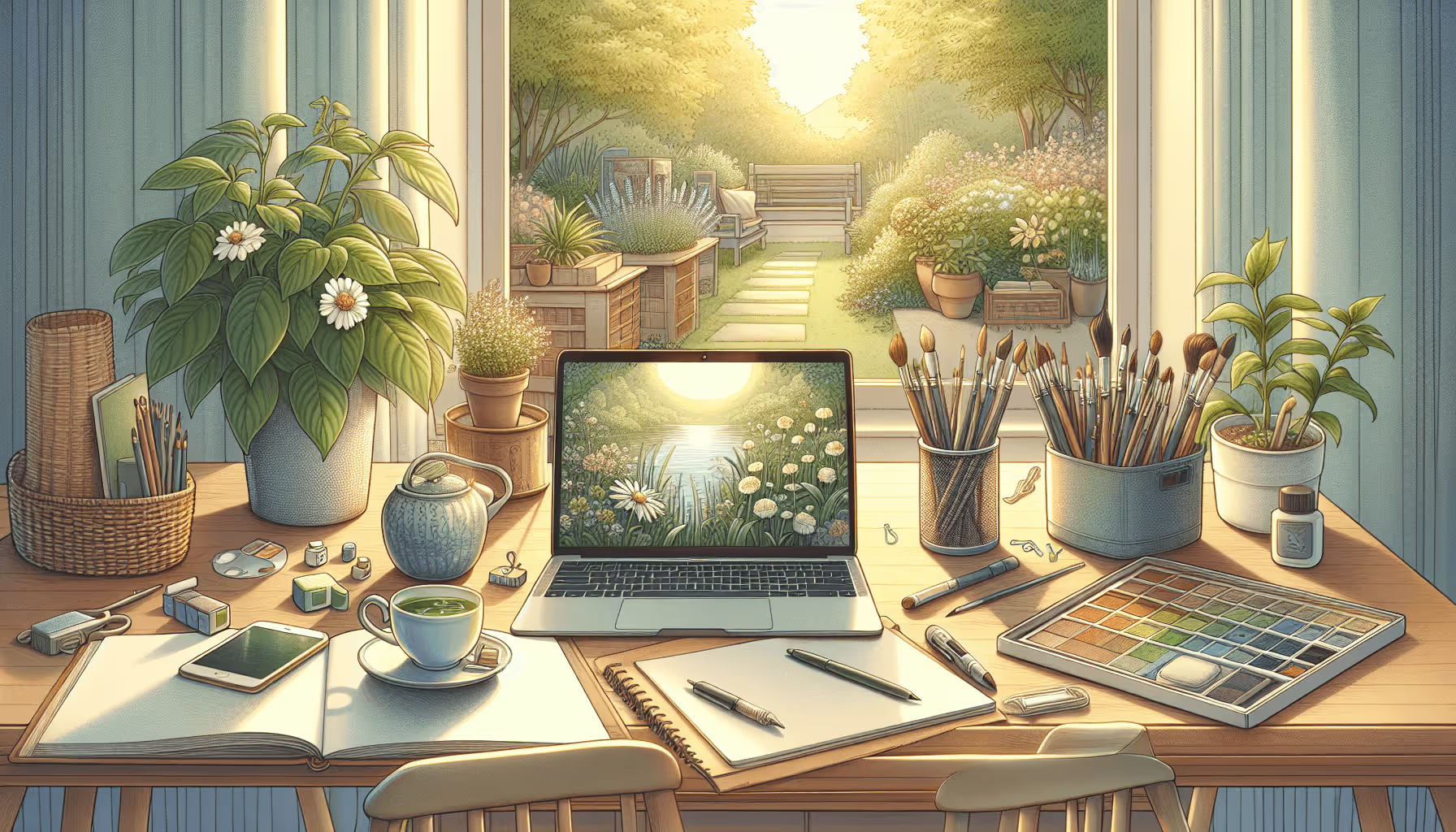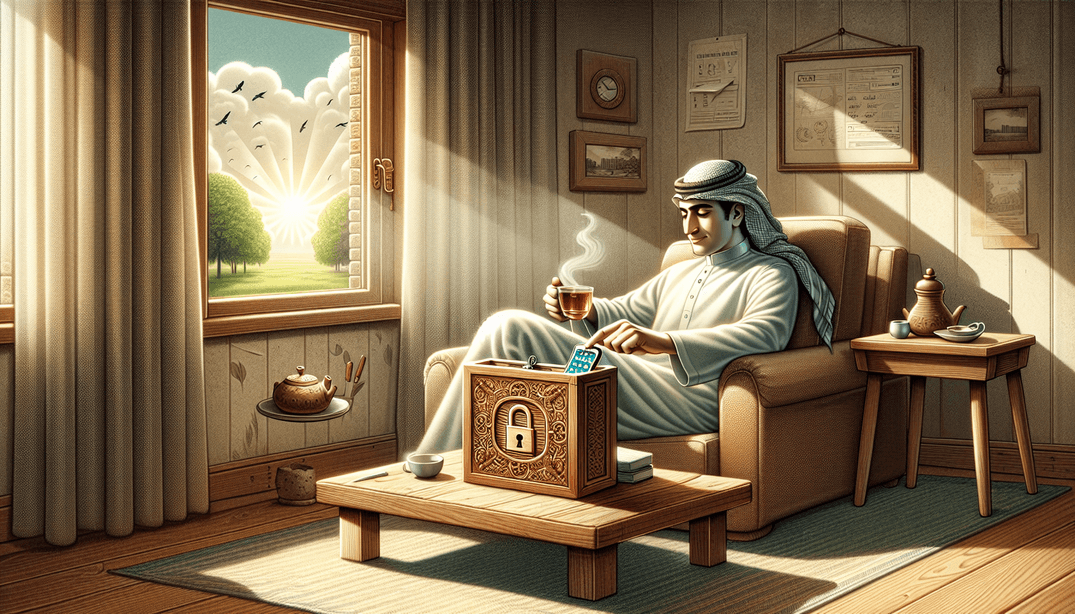Ever feel like you’re juggling too many balls at once, trying to keep up with work deadlines while still wanting to explore your creative side? You're not alone. Balancing productivity and creativity is a common challenge for busy professionals and creative enthusiasts alike. Finding the right equilibrium can significantly reduce stress and enhance overall well-being. The key isn't just to work harder, but to work smarter by integrating creativity into your daily routine without sacrificing productivity.
Balancing these elements is not just about adding more to your plate but aligning your tasks in a way that they complement each other. This approach can lead to a more fulfilling life where stress is managed effectively, and both productivity and creativity are allowed to flourish. Achieving this balance can transform your stress into a driving force for both personal and professional growth.
Understanding the Connection Between Productivity and Creativity
Productivity and creativity often appear to be at odds, but they are more interconnected than you might think. Creativity can fuel productivity by providing fresh perspectives and innovative solutions, while productivity can offer the structure needed to bring creative ideas to life.
A benefit here is that when these two forces are in harmony, they can lead to more efficient work processes and increased satisfaction. As Paul J. Meyer once said, “Productivity is never an accident. It is always the result of a commitment to excellence, intelligent planning, and focused effort.” This quote underscores the importance of intentionality in balancing productivity with creativity. When these elements are aligned, they can transform routine tasks into opportunities for innovation and growth (Cederberg, 2023).
One advantage of this connection is that creative endeavors can serve as a break from routine tasks, offering a mental reset that enhances focus and efficiency when returning to more structured work. Likewise, a productive mindset can help channel creative energy into tangible outcomes, ensuring that great ideas don't just remain as concepts but are effectively executed and shared.
Identifying Personal Stressors
Before you can effectively manage stress, it's crucial to identify what’s causing it. Stressors can range from tight deadlines and overwhelming workloads to personal obligations and lack of creative outlets. Understanding these stressors is the first step in addressing them.
Take some time to reflect on your daily activities and pinpoint moments that trigger stress. This awareness can be enlightening and empowering. Interestingly, in a survey, many professionals could name several activities, such as pursuing a hobby, that they'd like more time for. This lack of personal time can contribute significantly to stress levels and affect productivity (Harvard Business Review, 2019).
Once you've identified your stressors, you can start developing strategies to mitigate them. For instance, if a cluttered workspace is a stressor, organizing your environment might be a simple yet effective solution.
Keep in mind that stress management is a personal journey, and what works for one person might not work for another. The goal is to tailor your approach to fit your unique needs and lifestyle.
Strategies for Balancing Work and Creative Projects
Balancing work and creative projects requires intentional planning and prioritization. One strategy is time blocking, which involves setting aside specific times in your schedule dedicated solely to creative activities. This method ensures that creativity gets its due attention without interfering with work commitments.
A big plus here is that it can make your workdays more structured and less chaotic. Another approach is to integrate creative tasks into your work. For example, if your job involves problem-solving, try using creative brainstorming techniques to come up with innovative solutions. This not only enhances your work but also keeps your creative muscles flexed. Remember, the aim is to create a seamless flow between work and creativity, reducing stress and increasing satisfaction in both areas.
Implementing Mindfulness Practices in Daily Routines
Mindfulness practices can be a game-changer when it comes to managing stress and enhancing creativity. Activities like meditation, deep breathing, and mindful walking can help center your thoughts and reduce anxiety.
Keep in mind that mindfulness doesn't require a significant time investment; even a few minutes a day can make a difference. Incorporating mindfulness into your daily routine can also improve focus and clarity, making it easier to transition between productive and creative tasks. Note that these practices can also foster a sense of calm and presence, which is essential for staying grounded amidst the hustle and bustle of daily life. By embracing mindfulness, you create space for both productivity and creativity to thrive without the burden of stress.
The Importance of Self-Care in Enhancing Creativity
Self-care is not just about pampering yourself; it's a crucial component of maintaining mental and physical health, which directly impacts creativity. Engaging in activities that nourish your body and mind can lead to improved mood, energy levels, and cognitive function.
This, in turn, enhances your ability to think creatively and produce high-quality work. A benefit here is that self-care routines can be tailored to your preferences, whether that means taking a long bath, reading a good book, or going for a walk in nature. The key is to regularly engage in activities that recharge you, making you better equipped to handle stress and more open to creative insights. Remember, a well-rested mind is a fertile ground for creativity.
Setting Realistic Goals and Expectations
Setting realistic goals is essential for balancing productivity and creativity without succumbing to stress. It’s important to be ambitious, but equally crucial to be realistic about what you can achieve within a given timeframe.
Keep in mind that setting unattainable goals can lead to frustration and burnout, which stifle both productivity and creativity. Break down larger goals into smaller, manageable tasks. This approach not only makes the process less overwhelming but also allows for regular progress checks and adjustments. A big plus is that achieving small milestones can boost your confidence and motivation, driving you to pursue more significant objectives with enthusiasm and clarity.
Building a Supportive Environment
A supportive environment can greatly influence your ability to balance productivity and creativity. Surround yourself with people who understand your goals and respect your need for both structured work and creative exploration.
This network can provide encouragement, feedback, and new perspectives that enrich your work and creative projects. Creating a physical environment that supports your productivity and creativity is also essential. Arrange your workspace to minimize distractions and inspire creativity. Side note: even small changes, like adding plants or personalizing your desk, can make a notable difference in your work environment's overall vibe and functionality.
Embracing Flexibility and Adaptability
Flexibility and adaptability are key to managing stress while balancing productivity and creativity. Life is unpredictable, and rigid plans can lead to unnecessary stress when things don’t go as expected.
By embracing flexibility, you allow yourself to adjust to changes and continue moving forward without losing sight of your goals. Adaptability also means being open to new ideas and approaches, which can enhance both productivity and creativity. Keep in mind that sometimes the best solutions come from unexpected directions. Being adaptable allows you to pivot and explore these new paths, ultimately leading to richer and more fulfilling outcomes.
Conclusion and Encouragement for Personal Growth
Balancing productivity and creativity is a continuous journey rather than a destination. It requires ongoing effort, reflection, and adaptation. However, the rewards are well worth it, leading to reduced stress, enhanced well-being, and a more fulfilling life.
Remember, progress, not perfection, is the goal, and each step you take is a step towards personal growth. Encourage yourself to celebrate small victories and learn from setbacks. Every experience is an opportunity for growth and insight. By prioritizing both productivity and creativity, you set the stage for a balanced, less stressful life that allows you to thrive in both personal and professional arenas. Keep pushing forward, and you'll find that the balance you seek is within reach.
References
Cederberg, M. (2023). How to Avoid Unproductive Productivity When You're Busy. Retrieved from https://michellecederberg.com/how-to-avoid-unproductive-productivity/
Harvard Business Review. (2019). Why You Should Work Less and Spend More Time on Hobbies. Retrieved from https://hbr.org/2019/02/why-you-should-work-less-and-spend-more-time-on-hobbies






